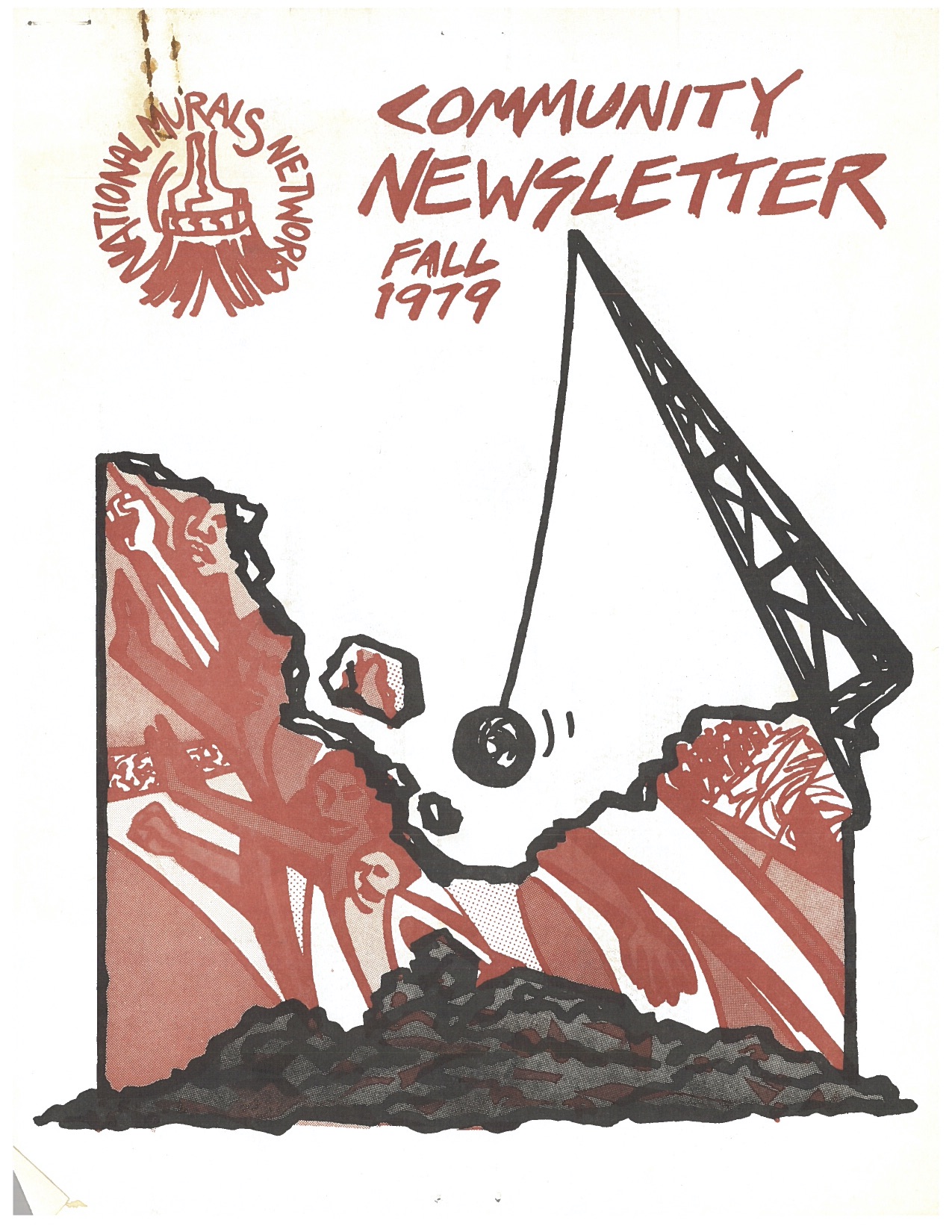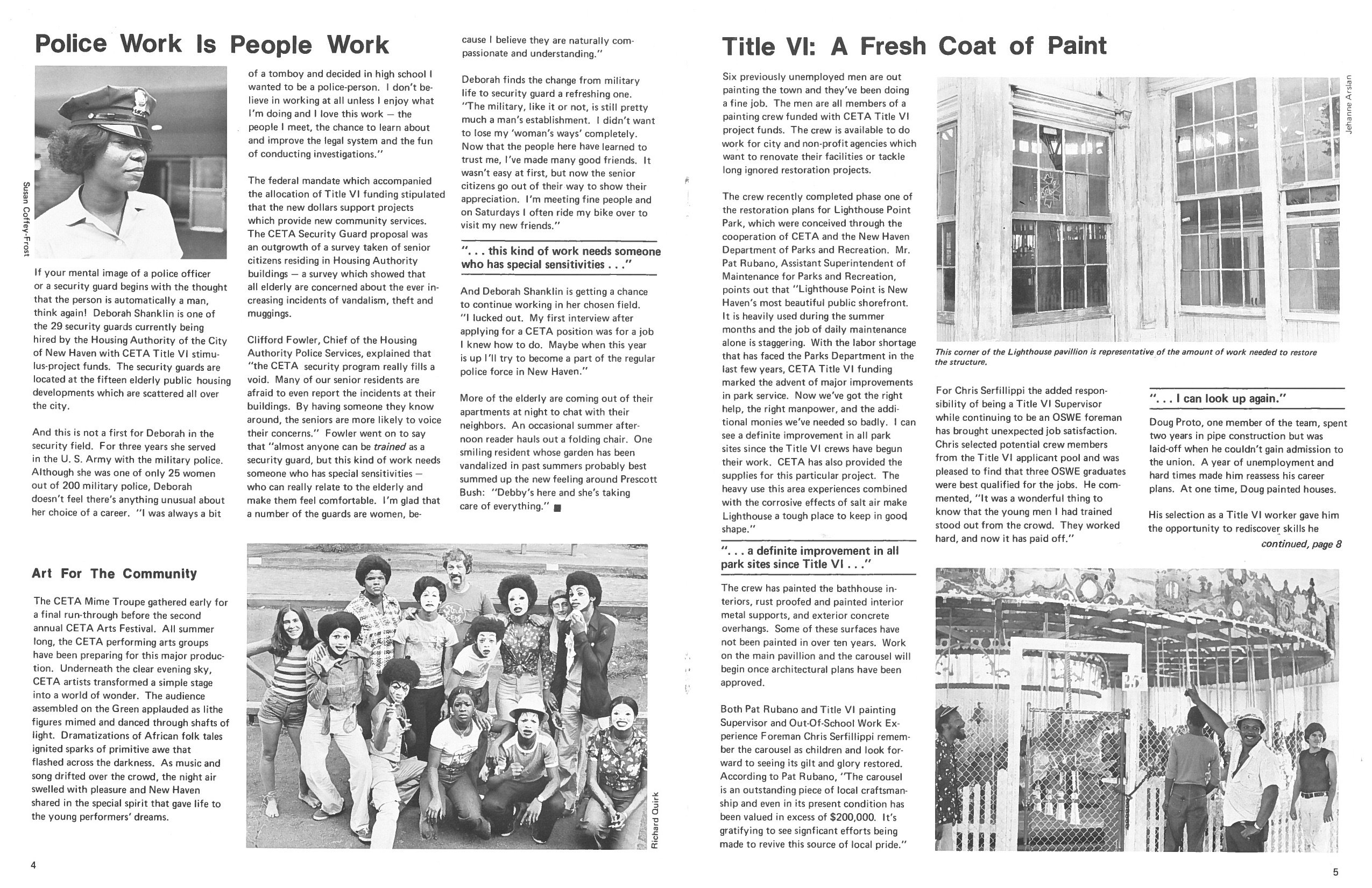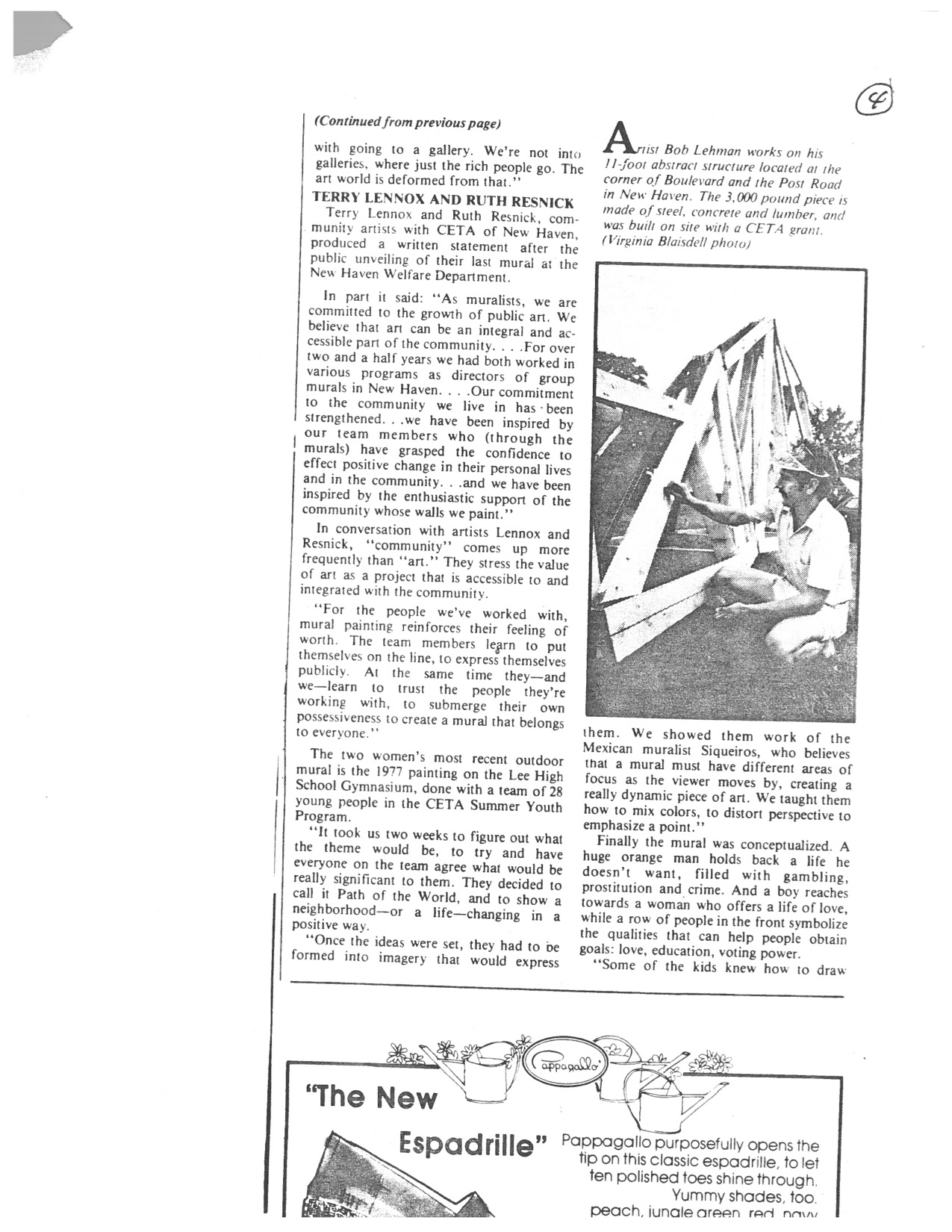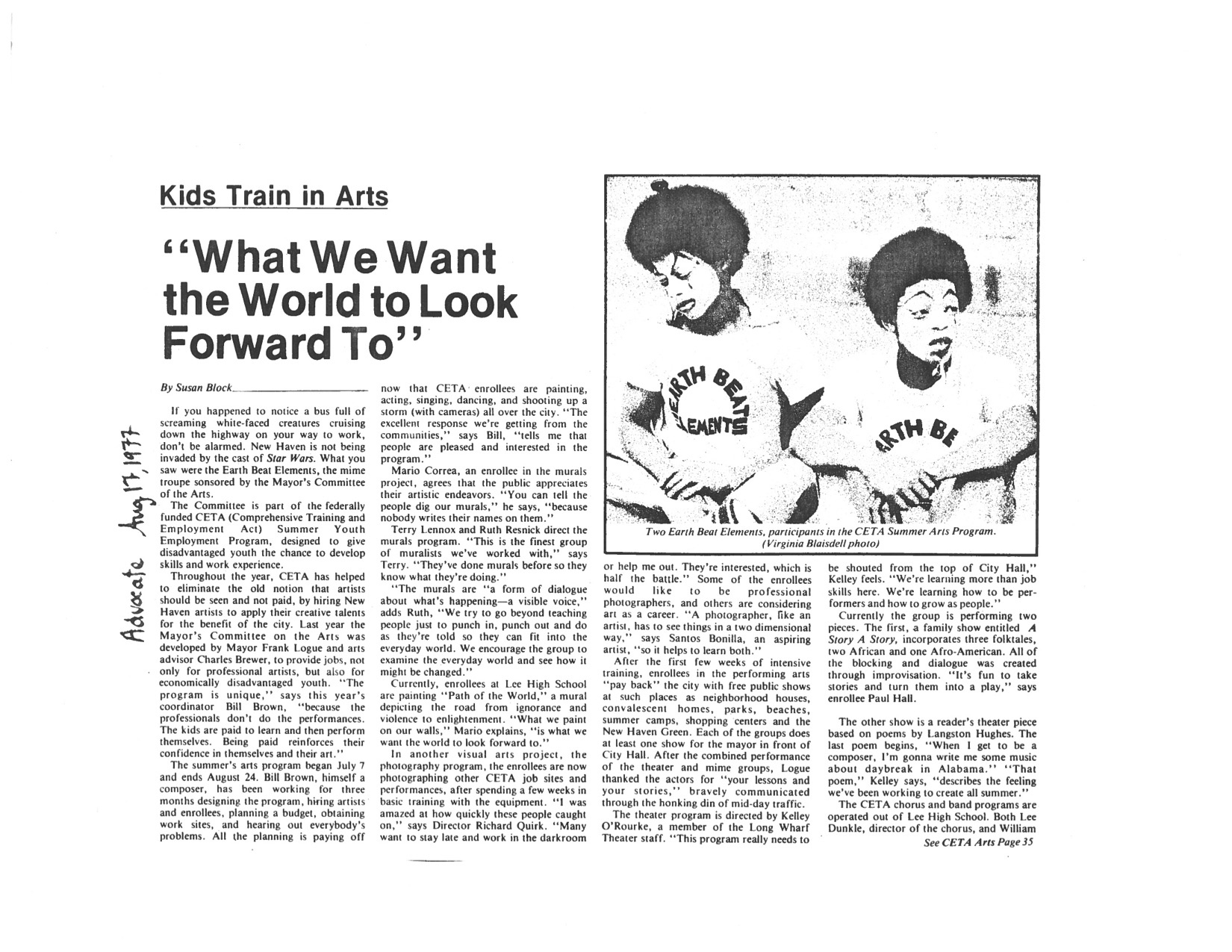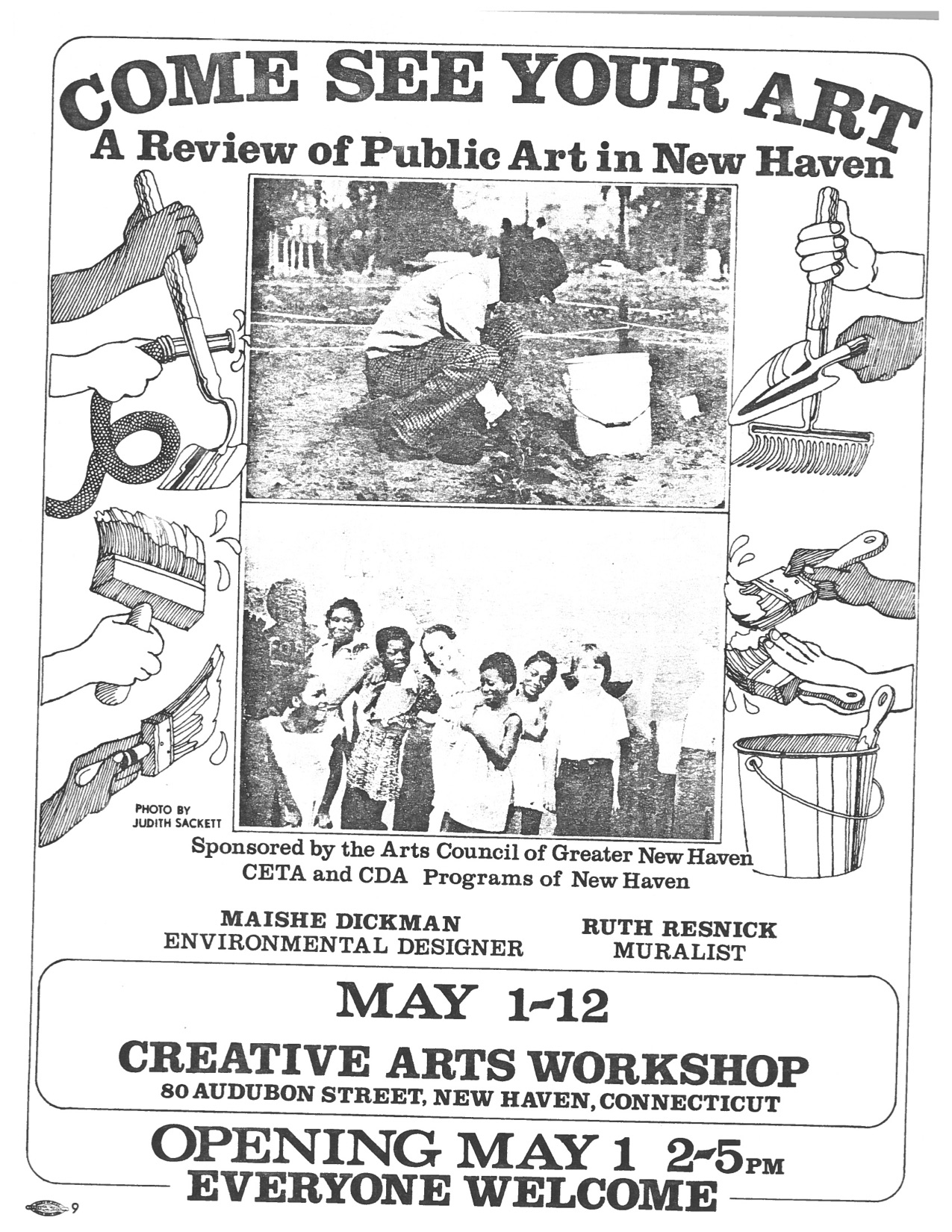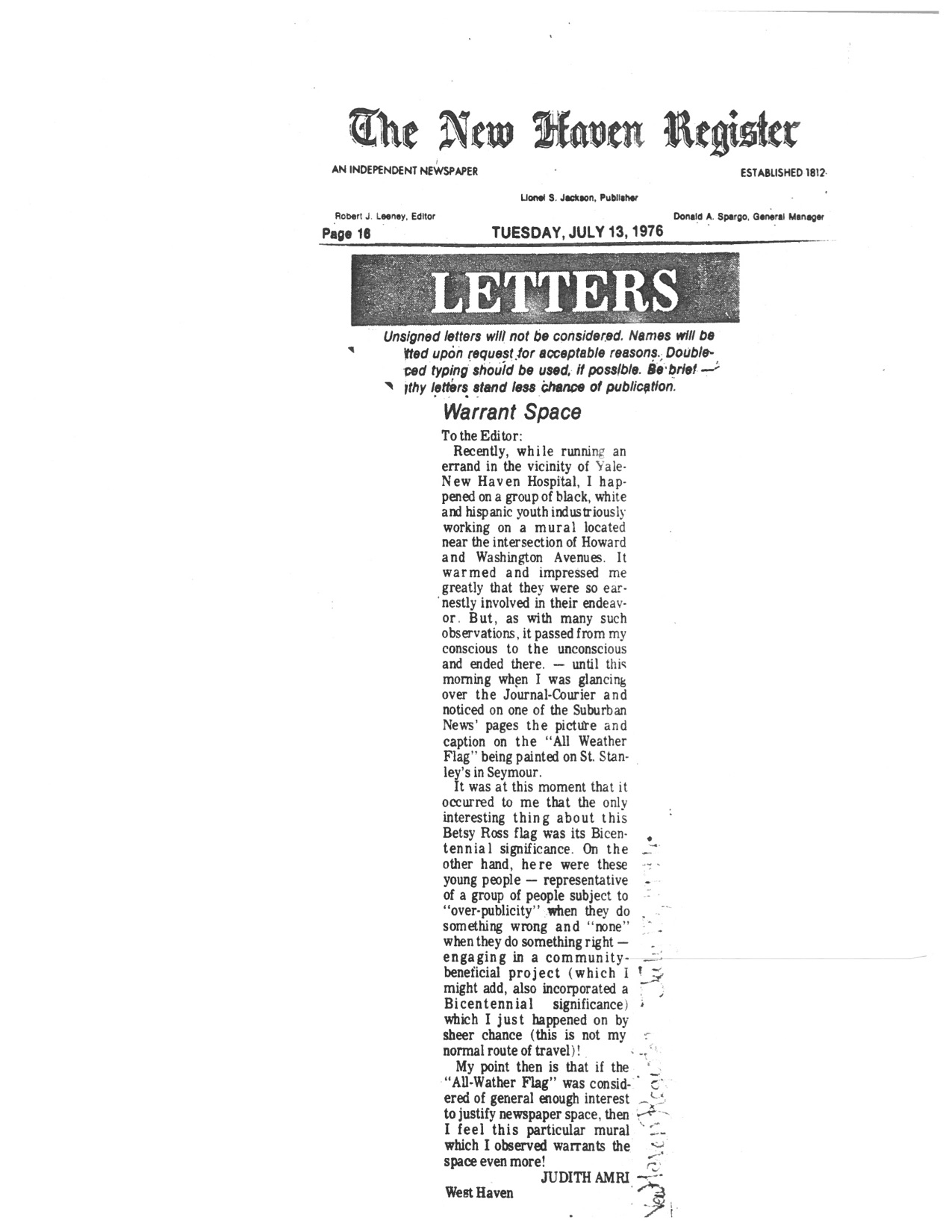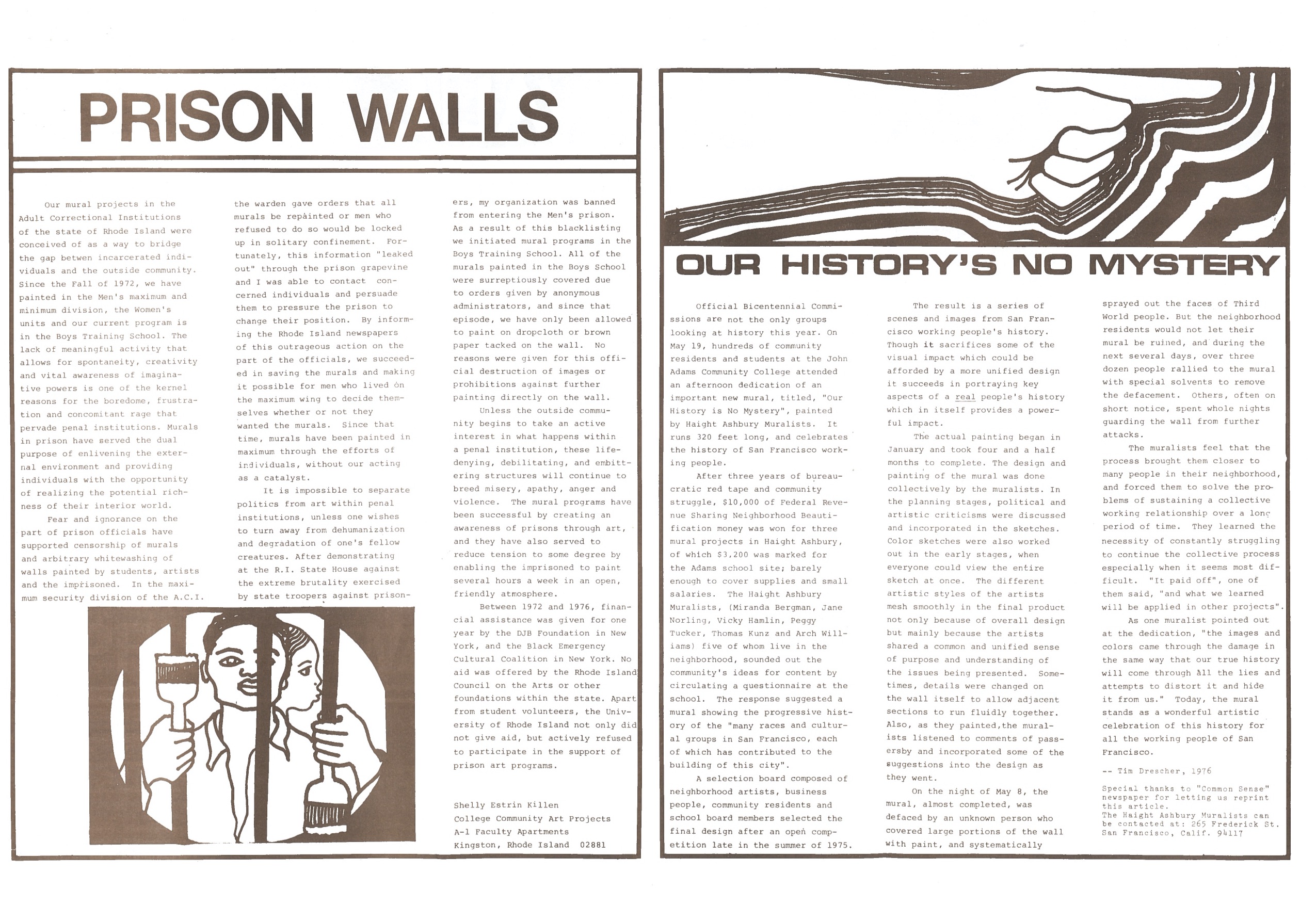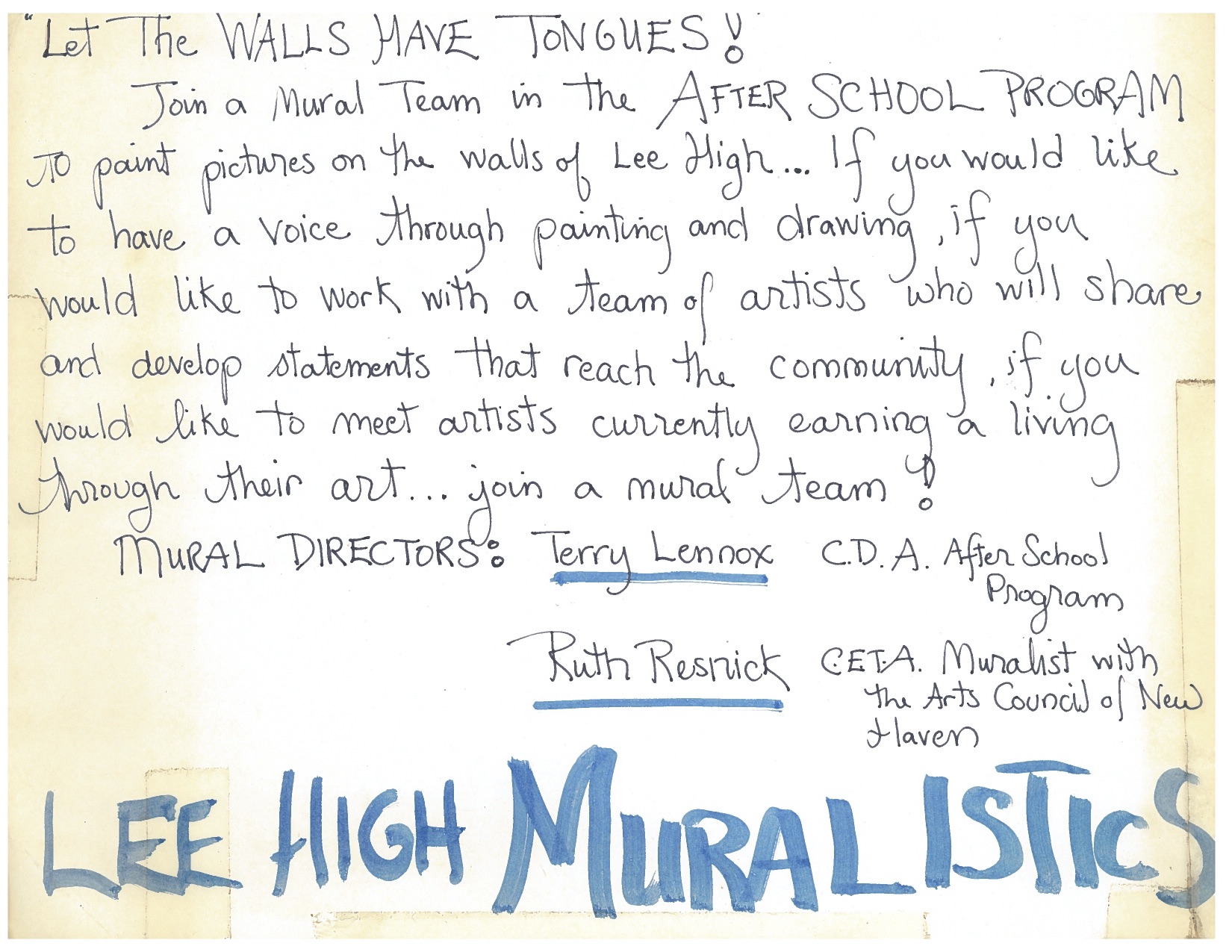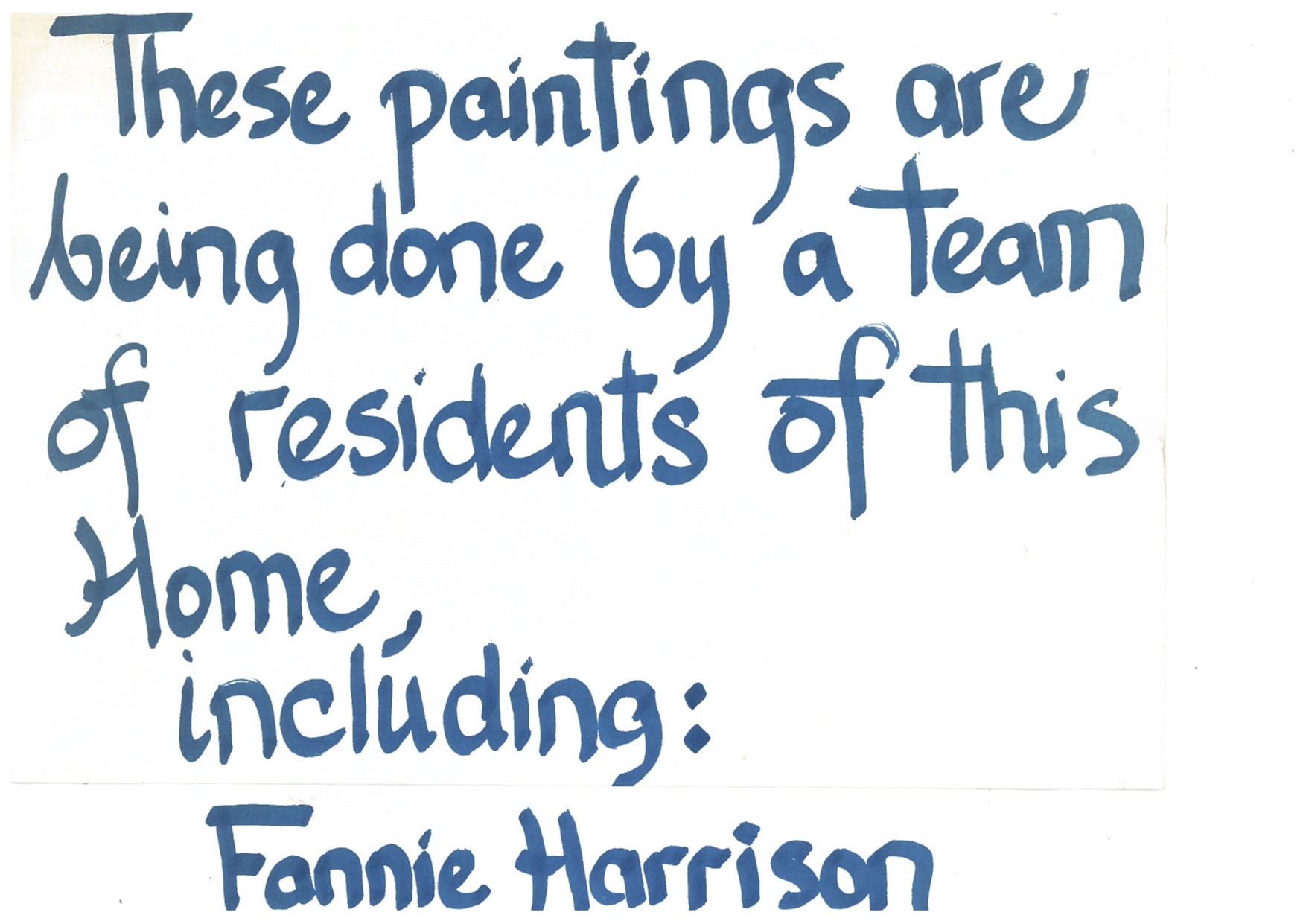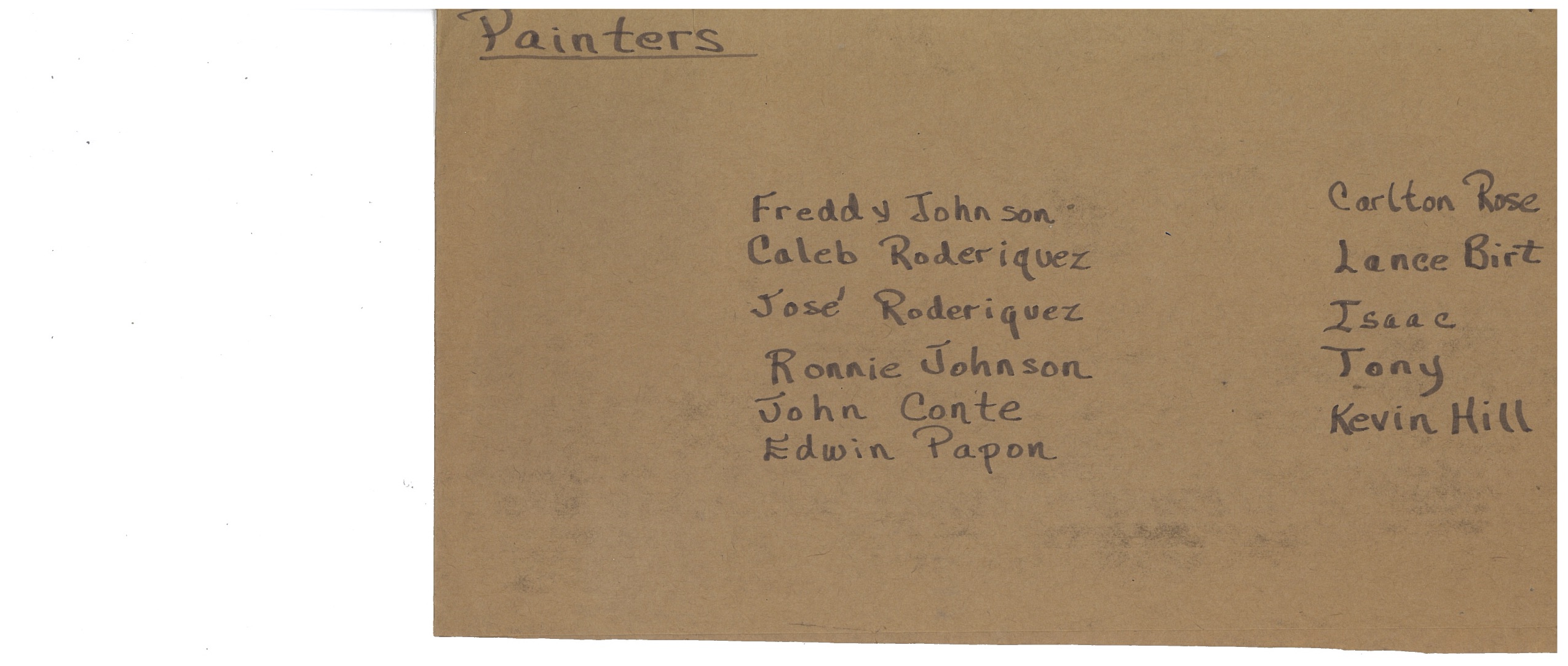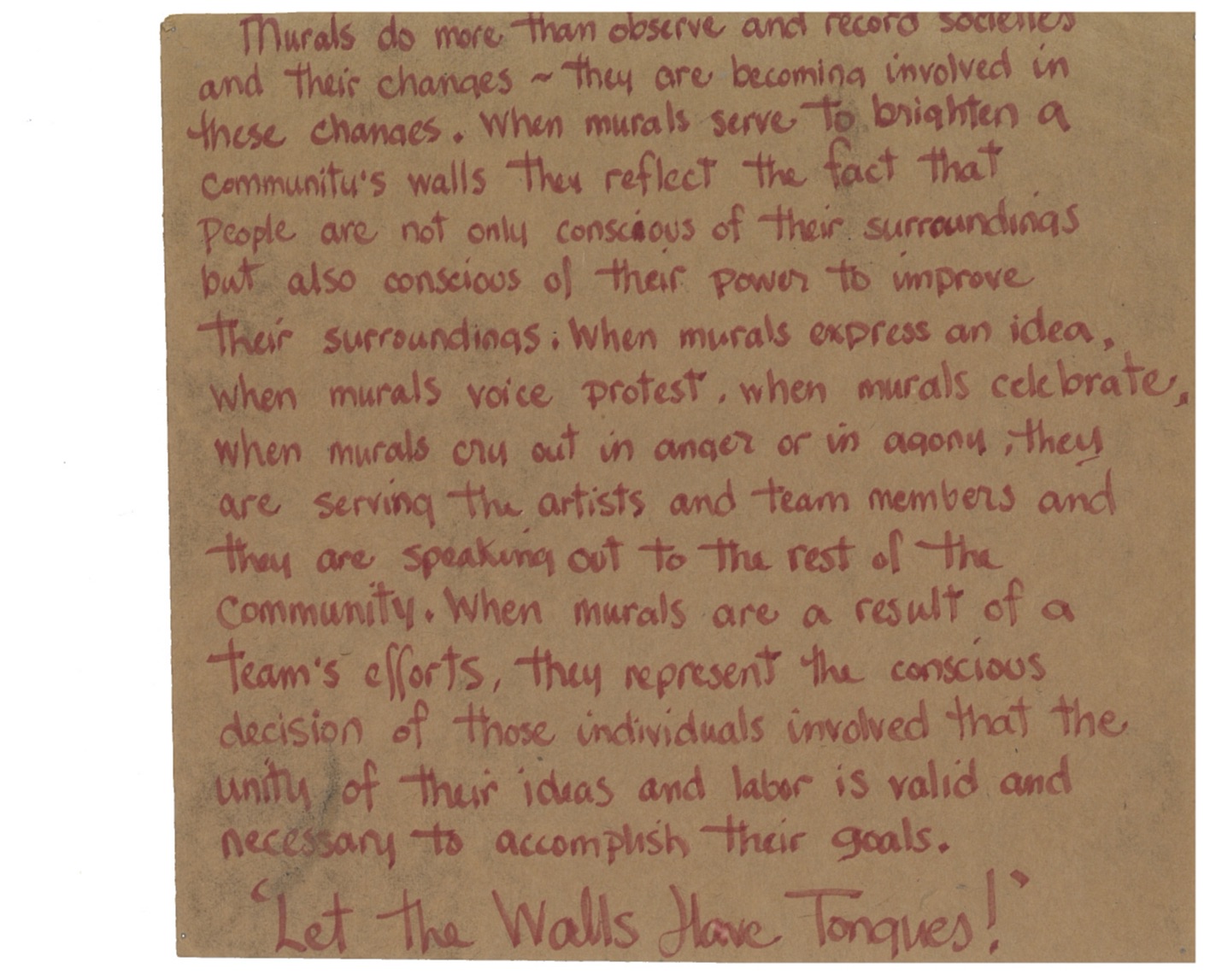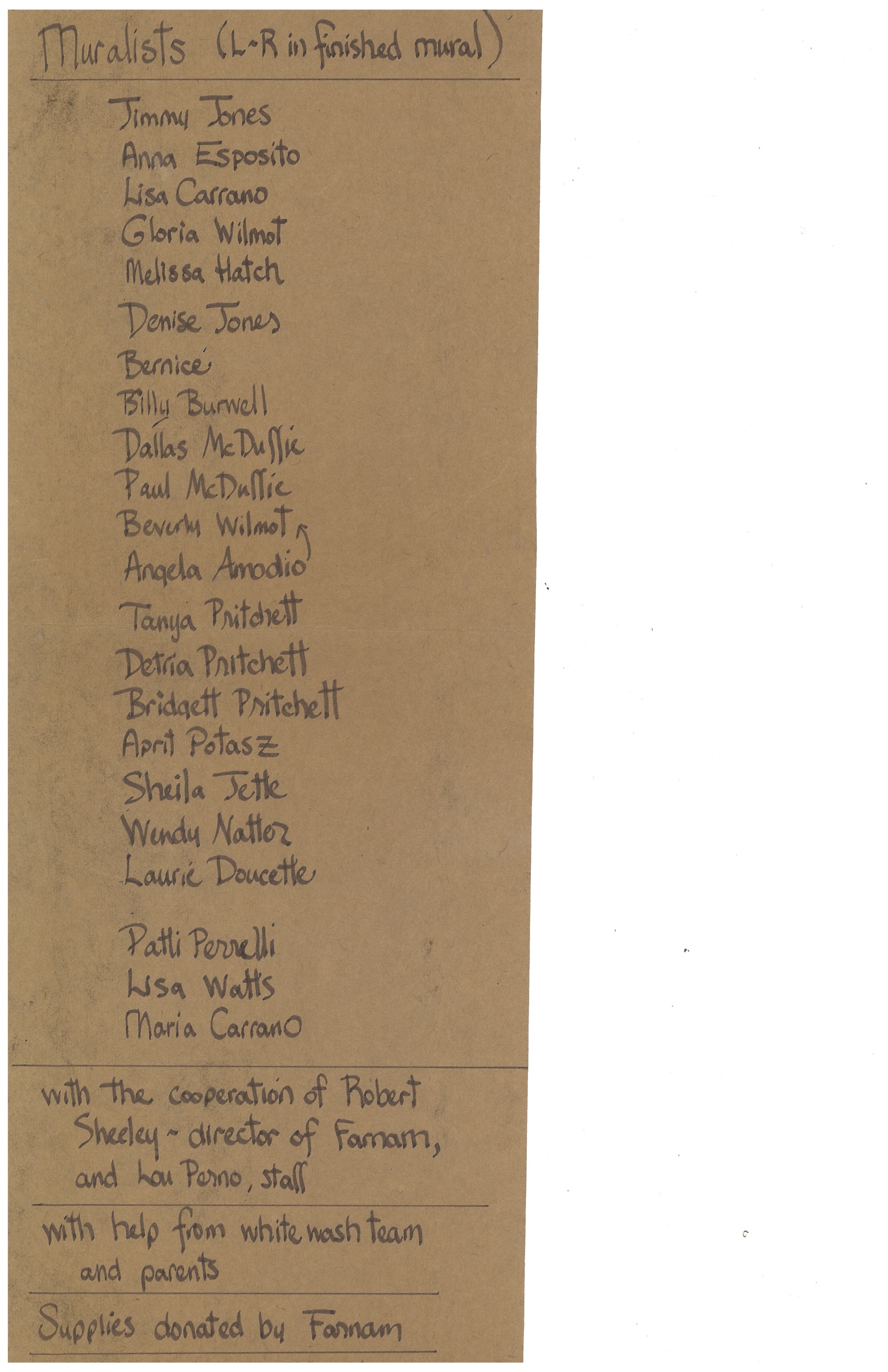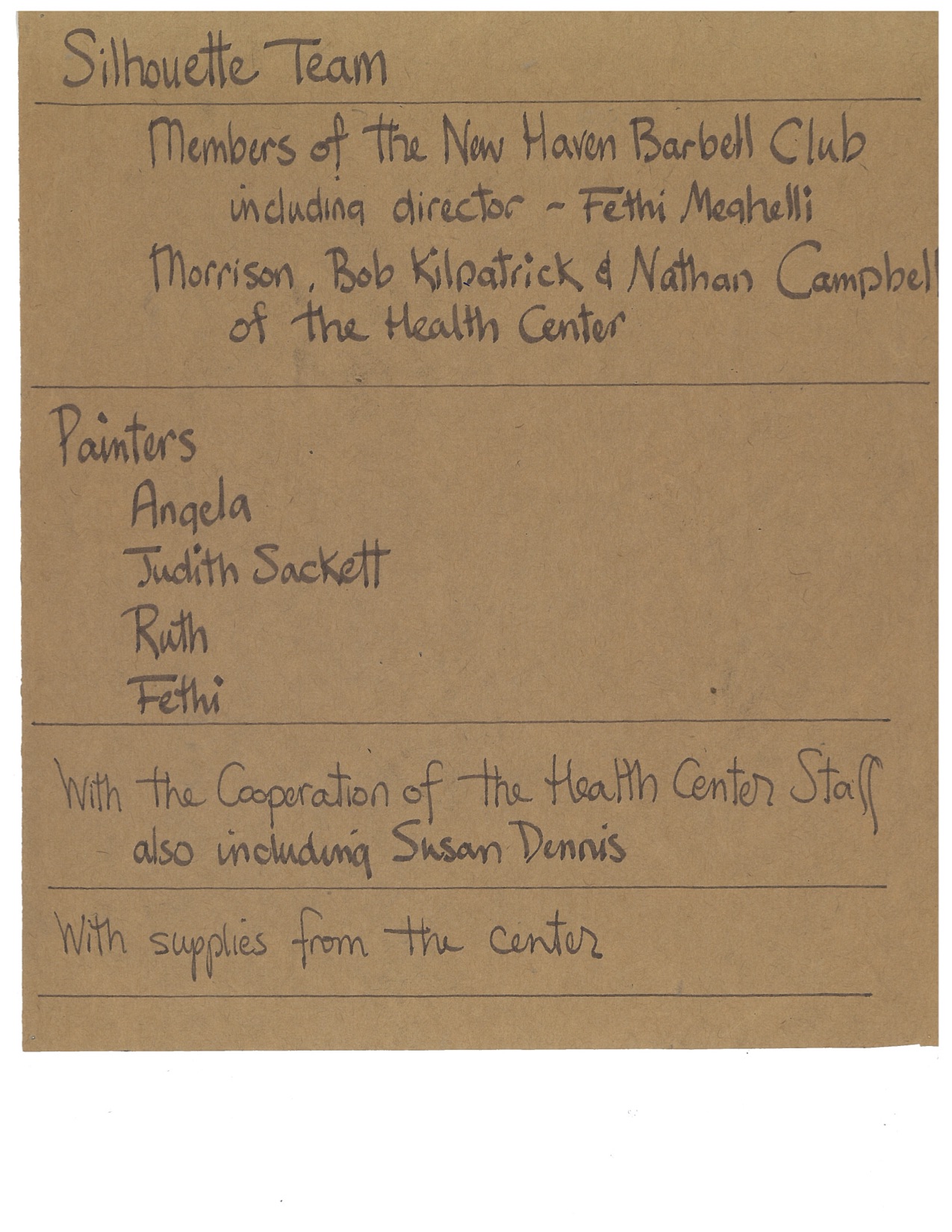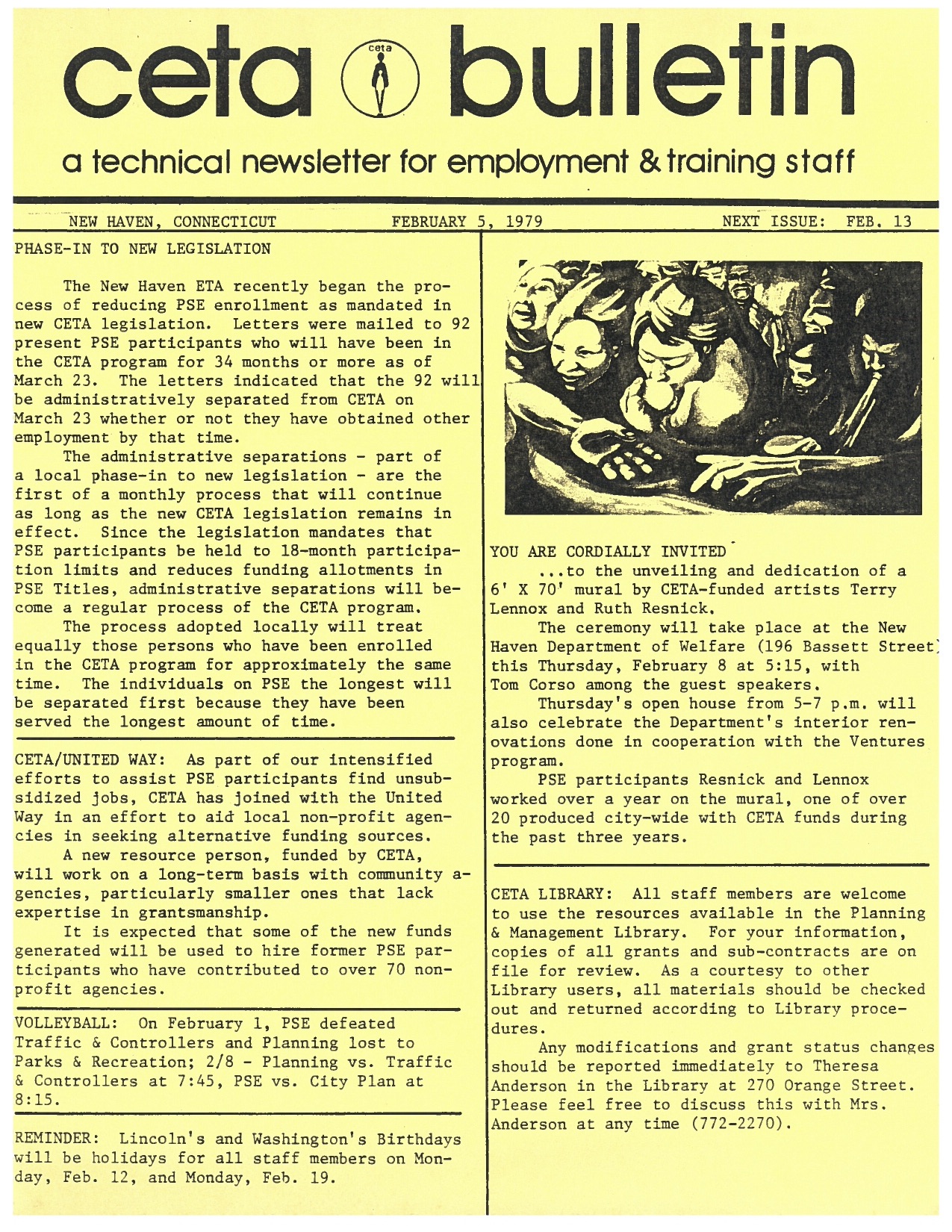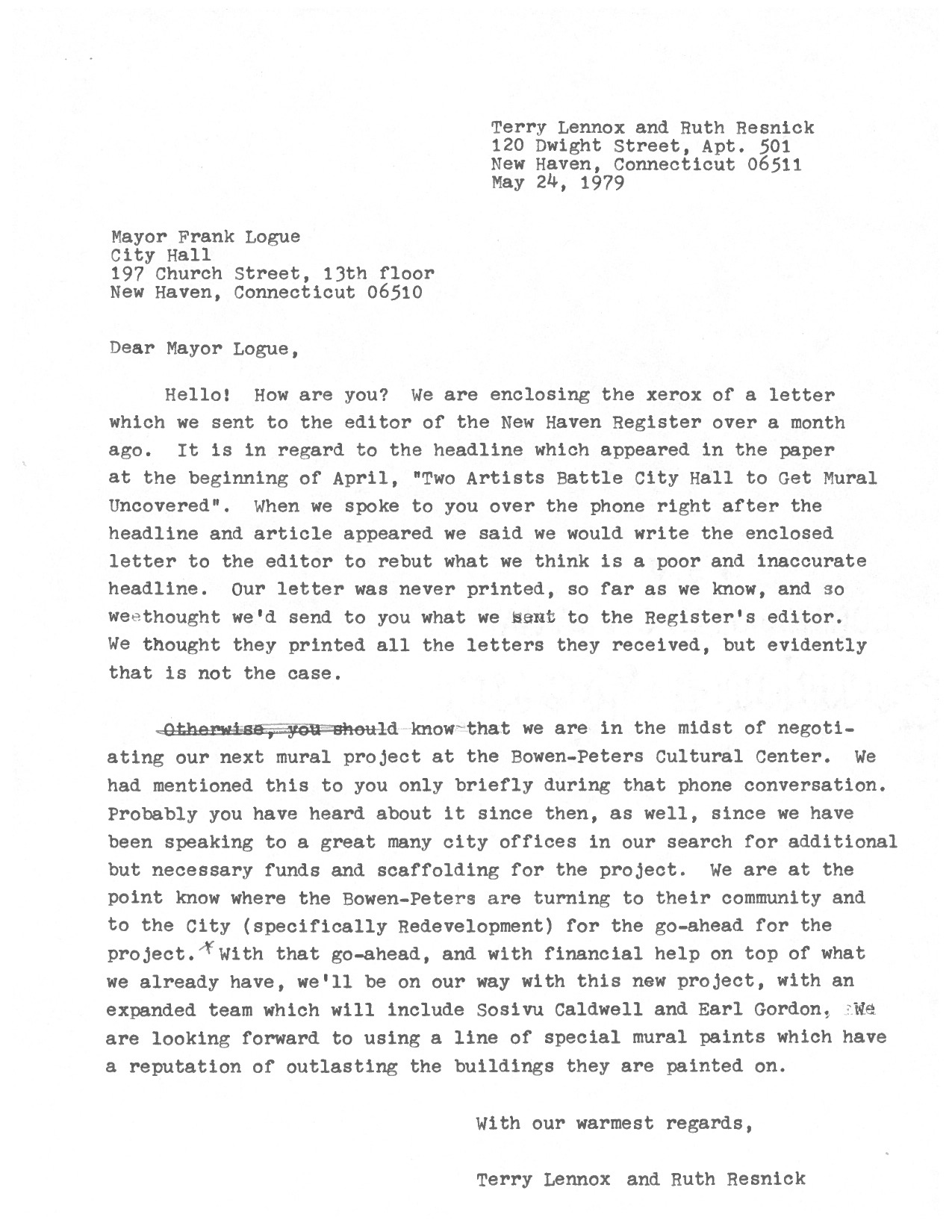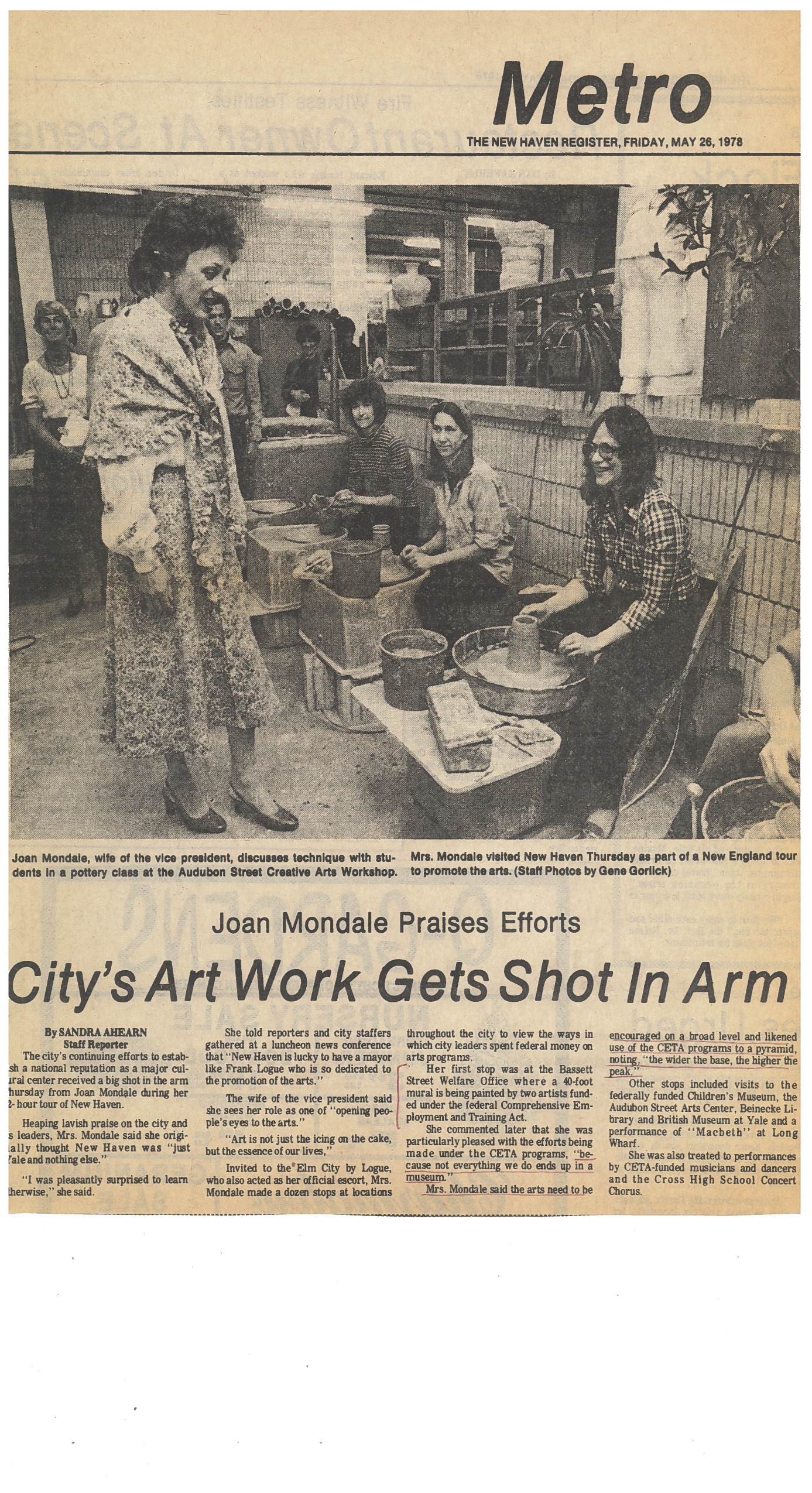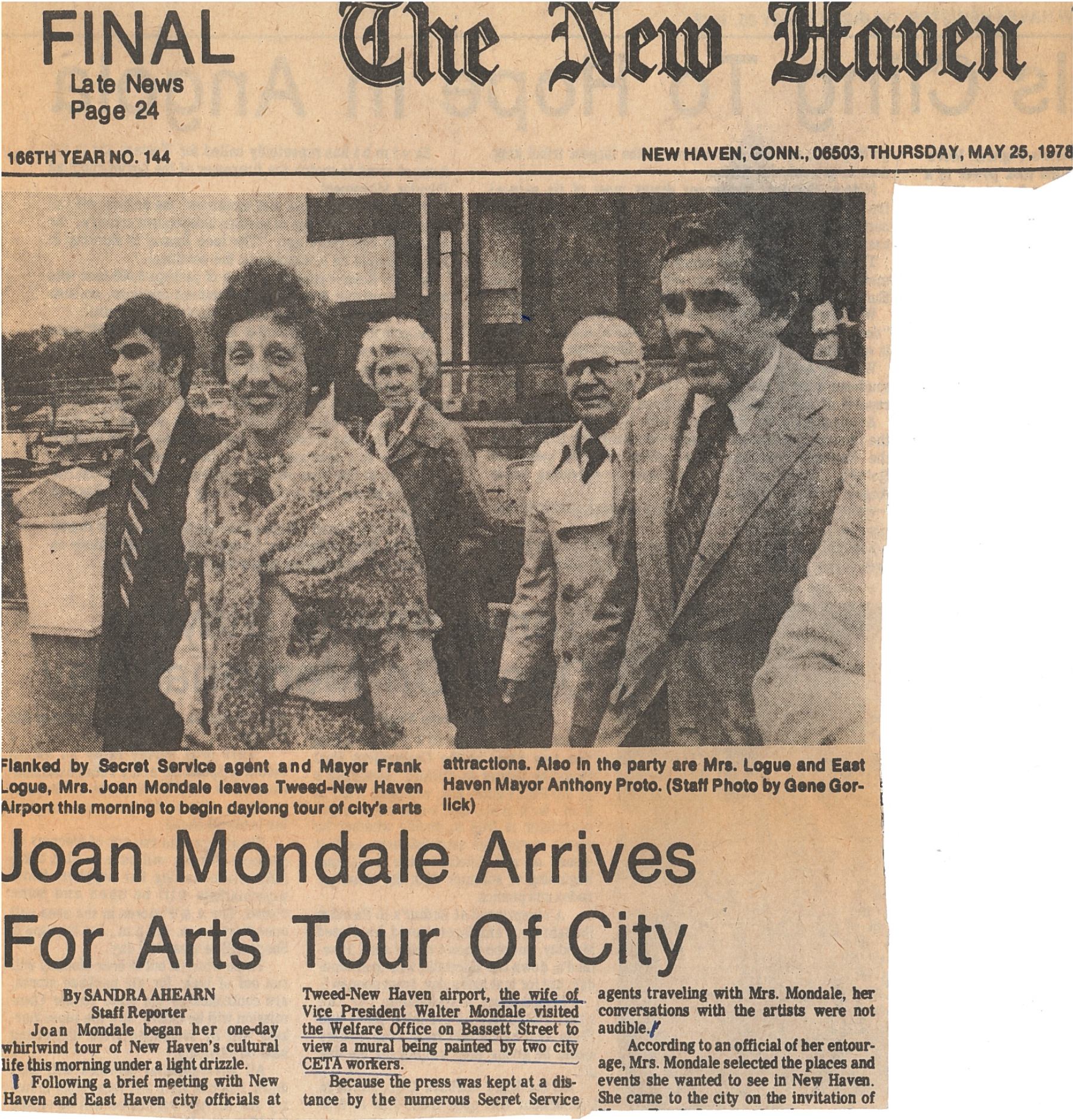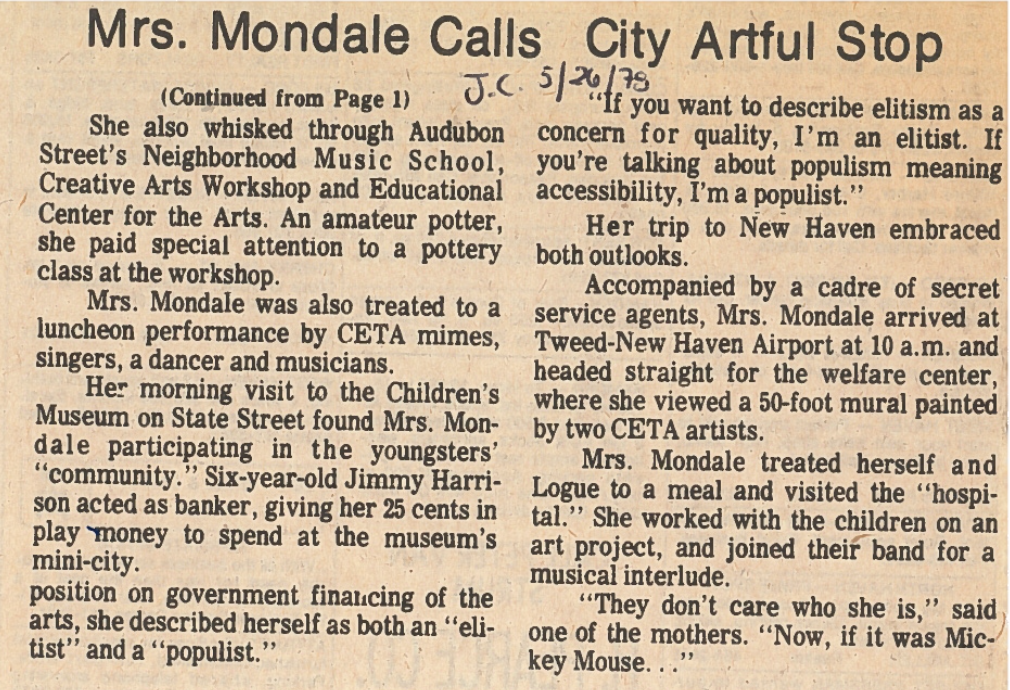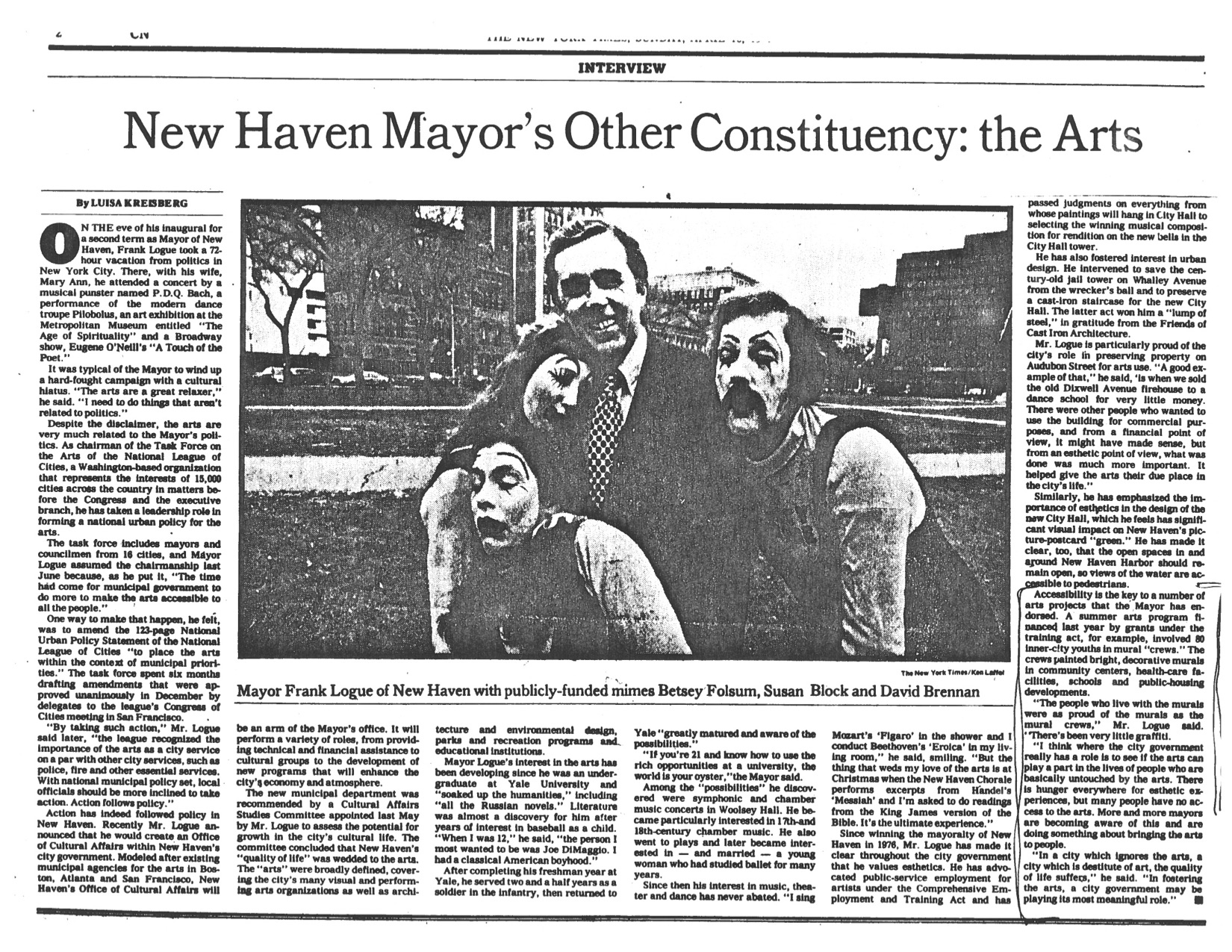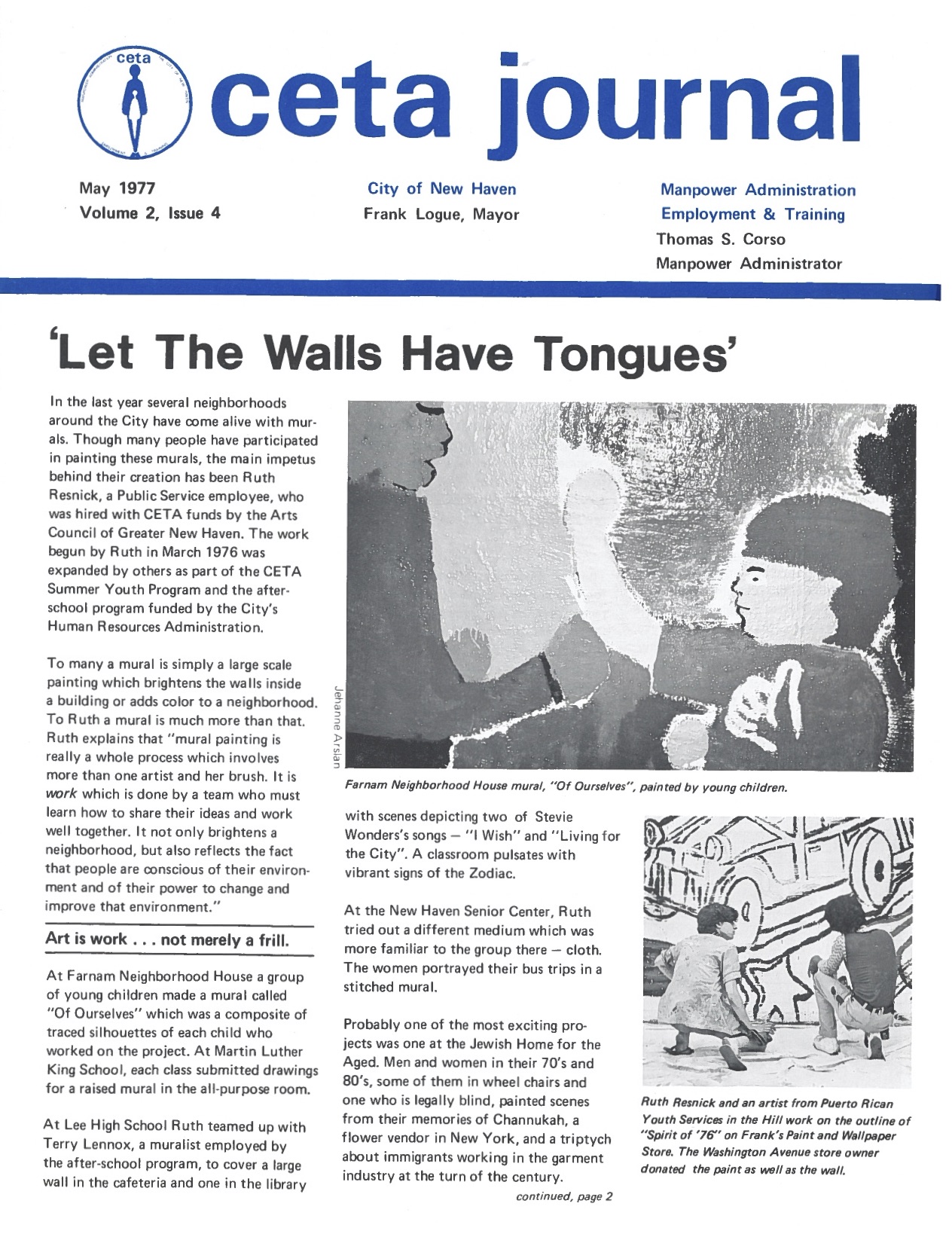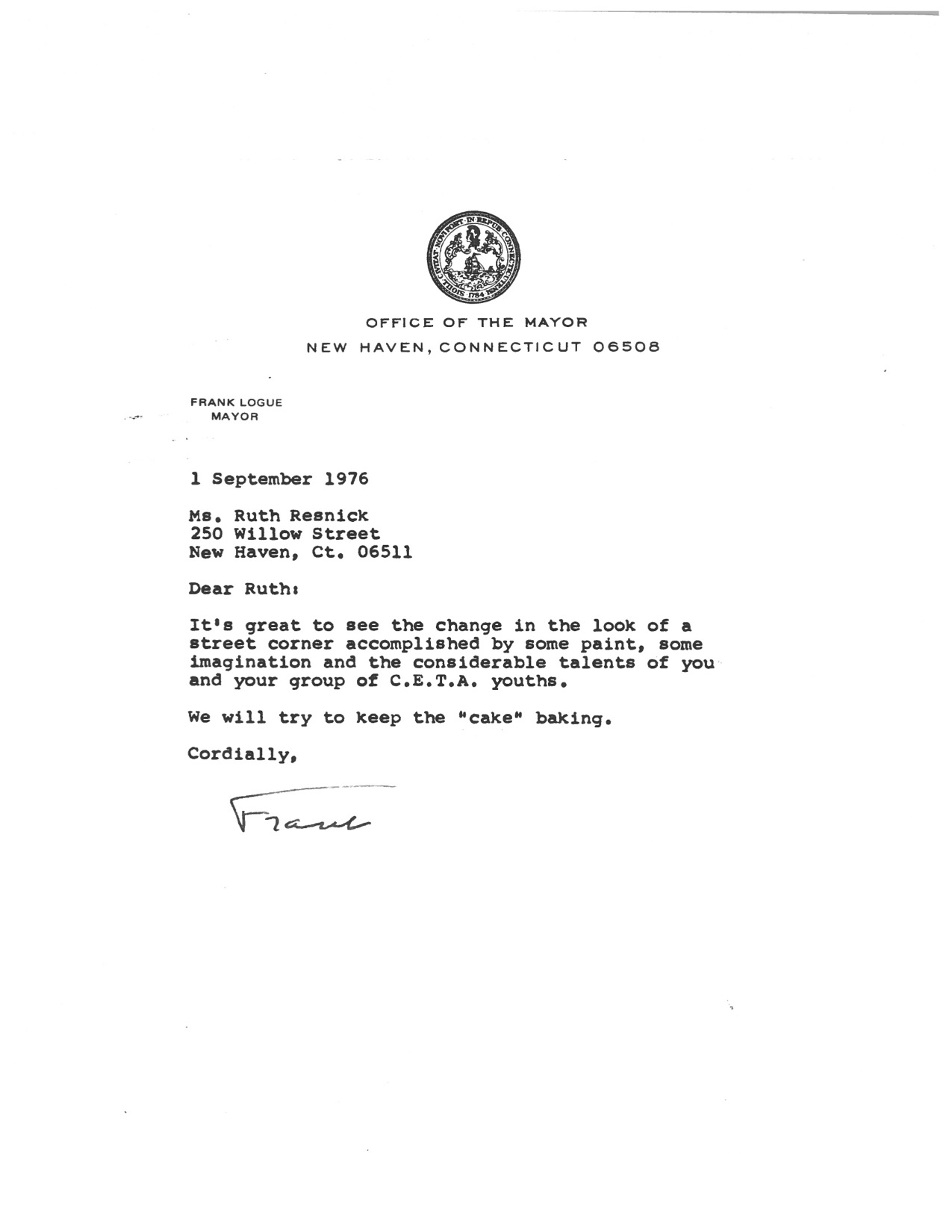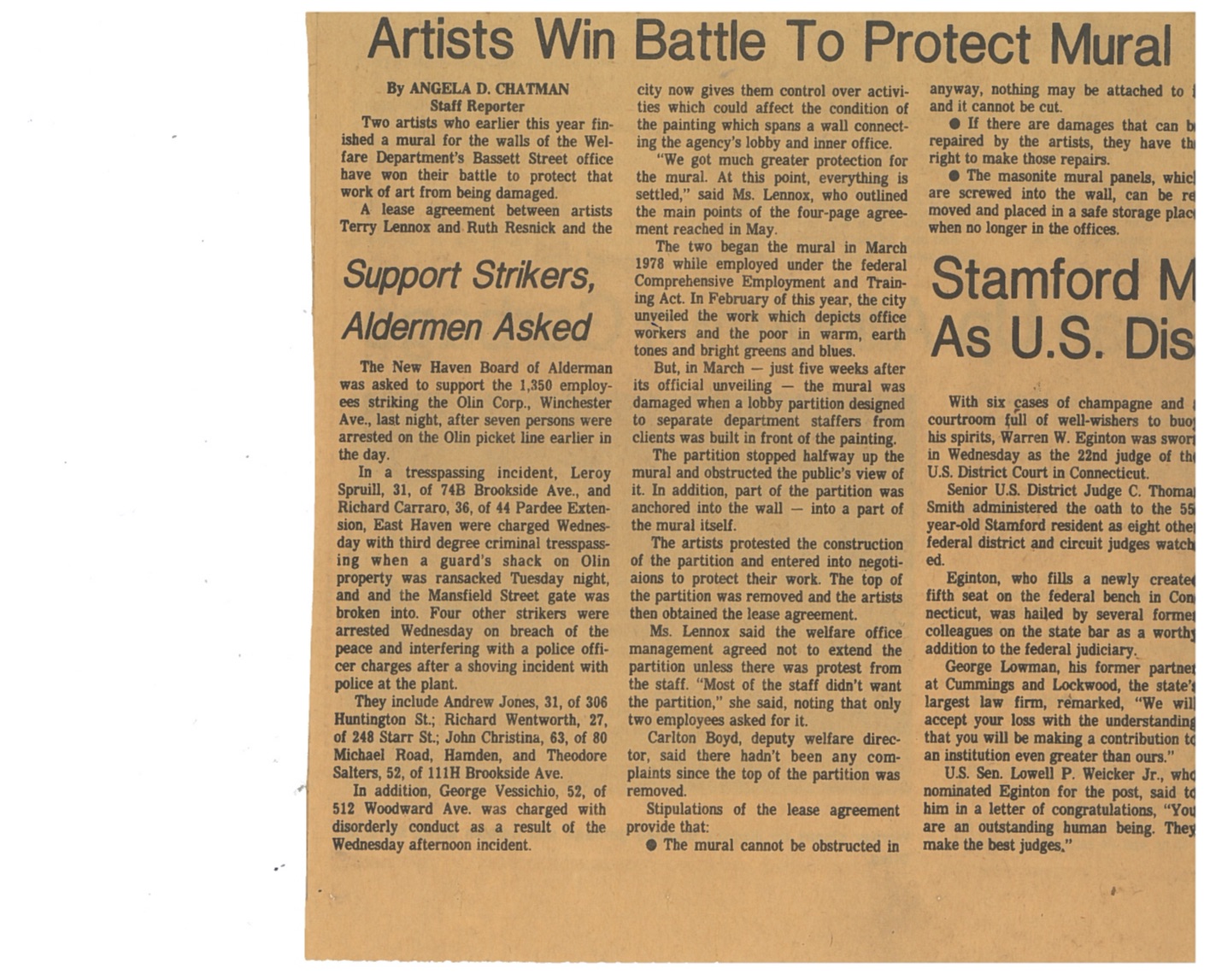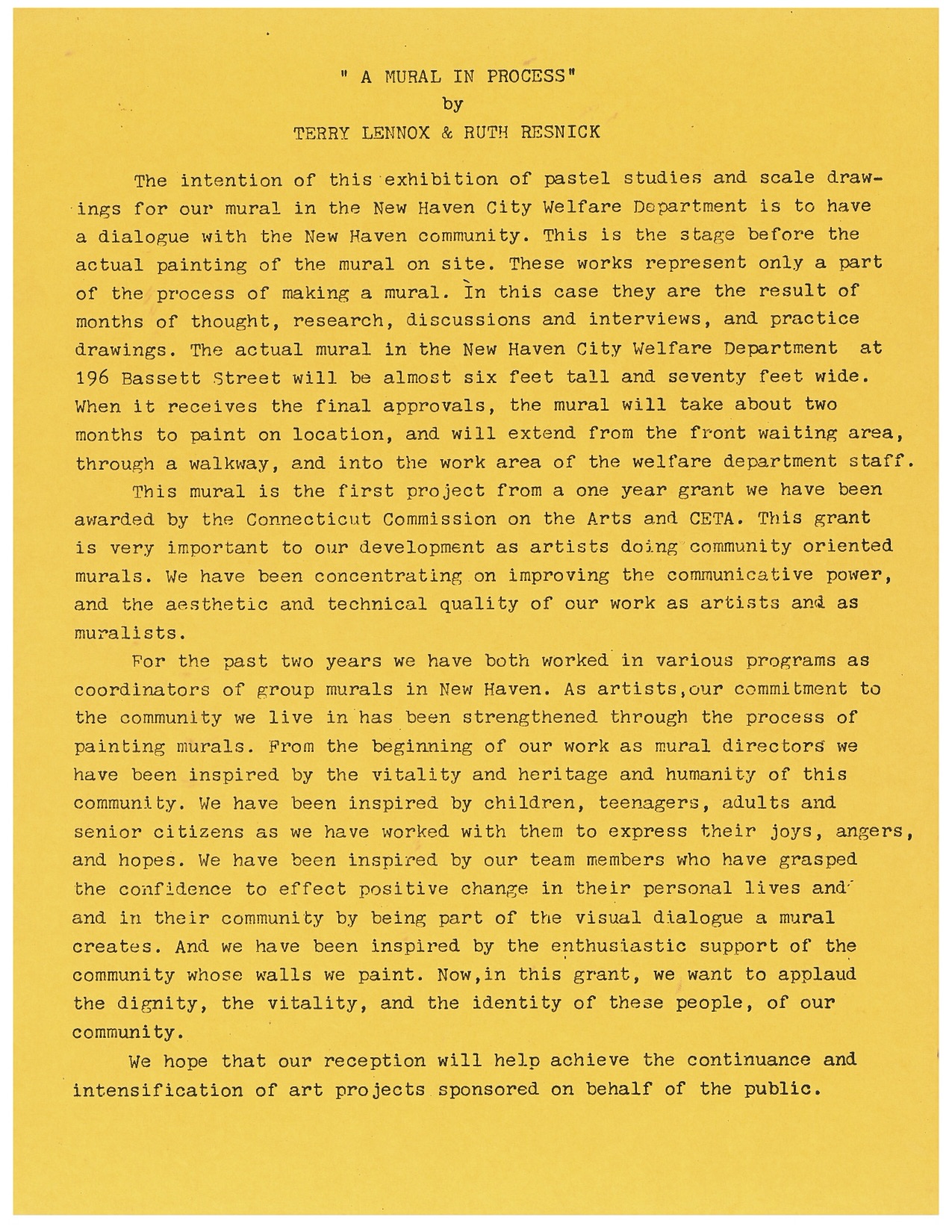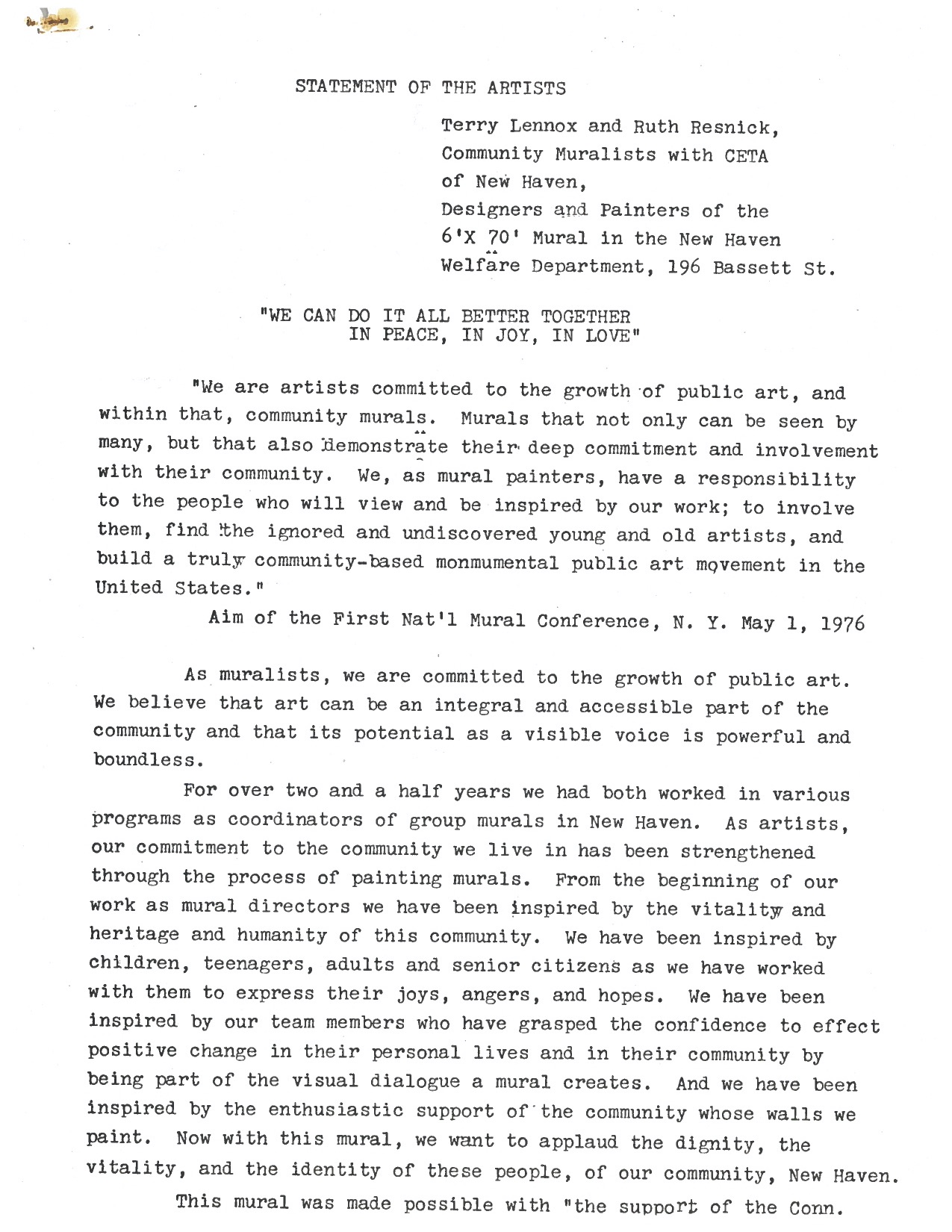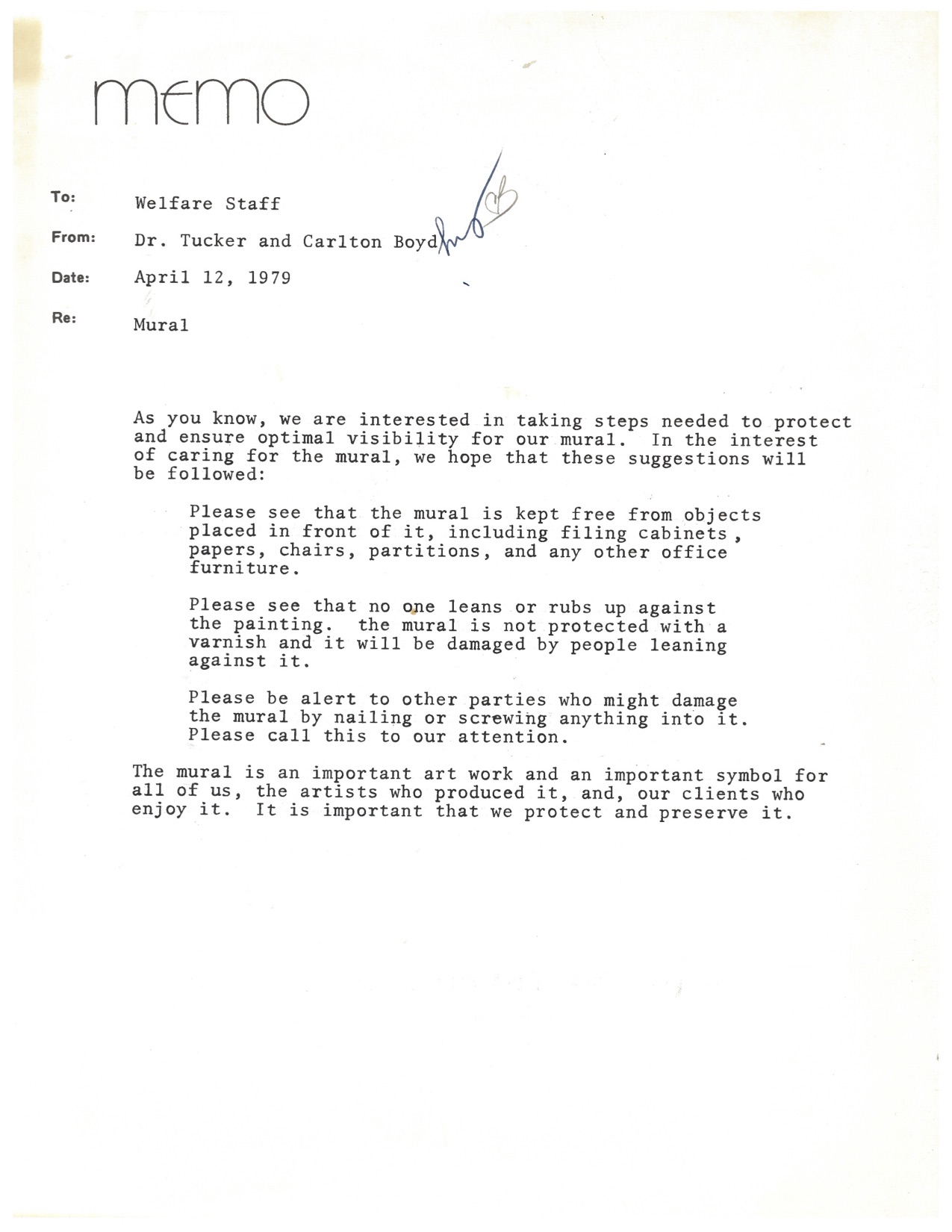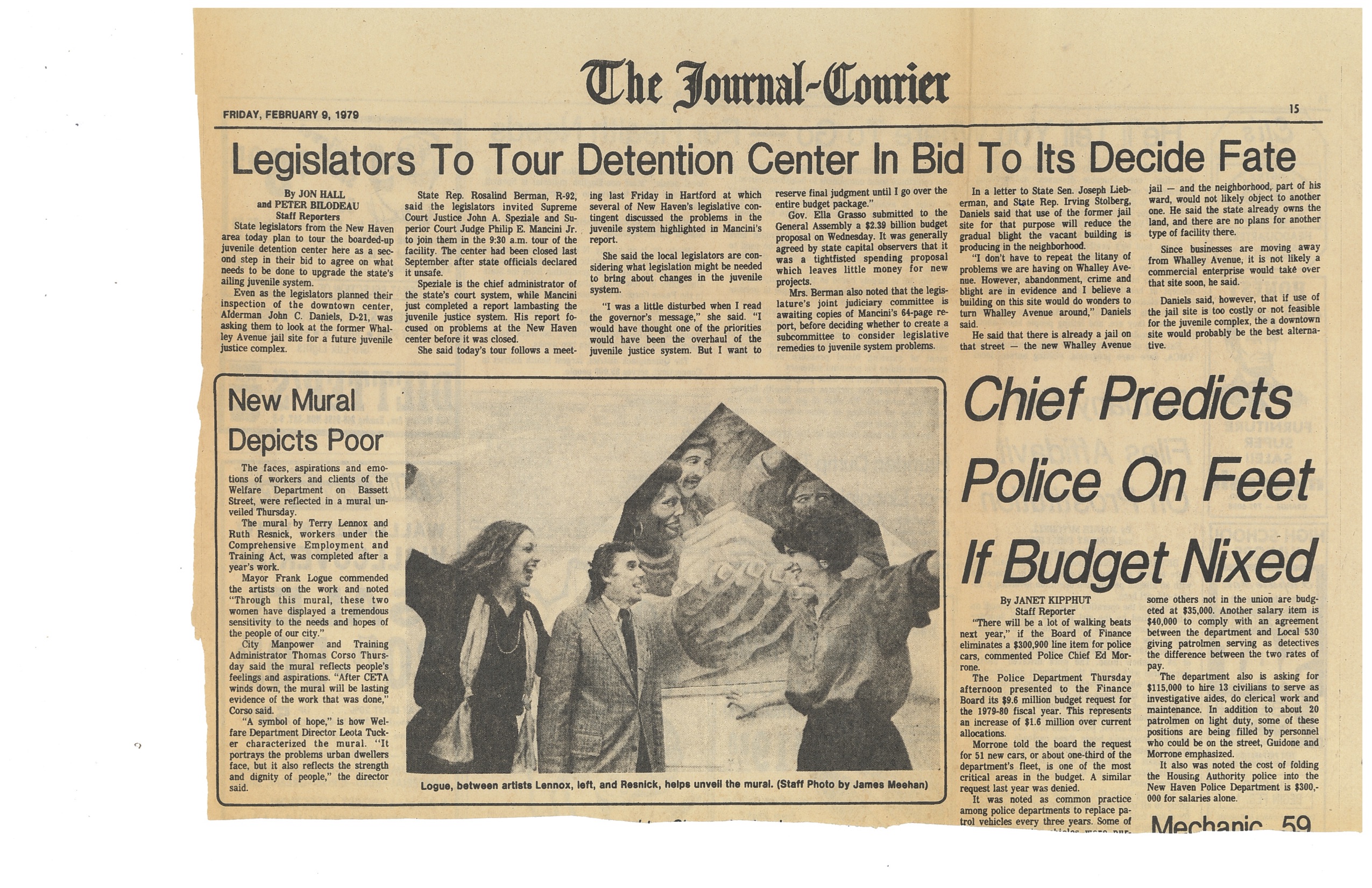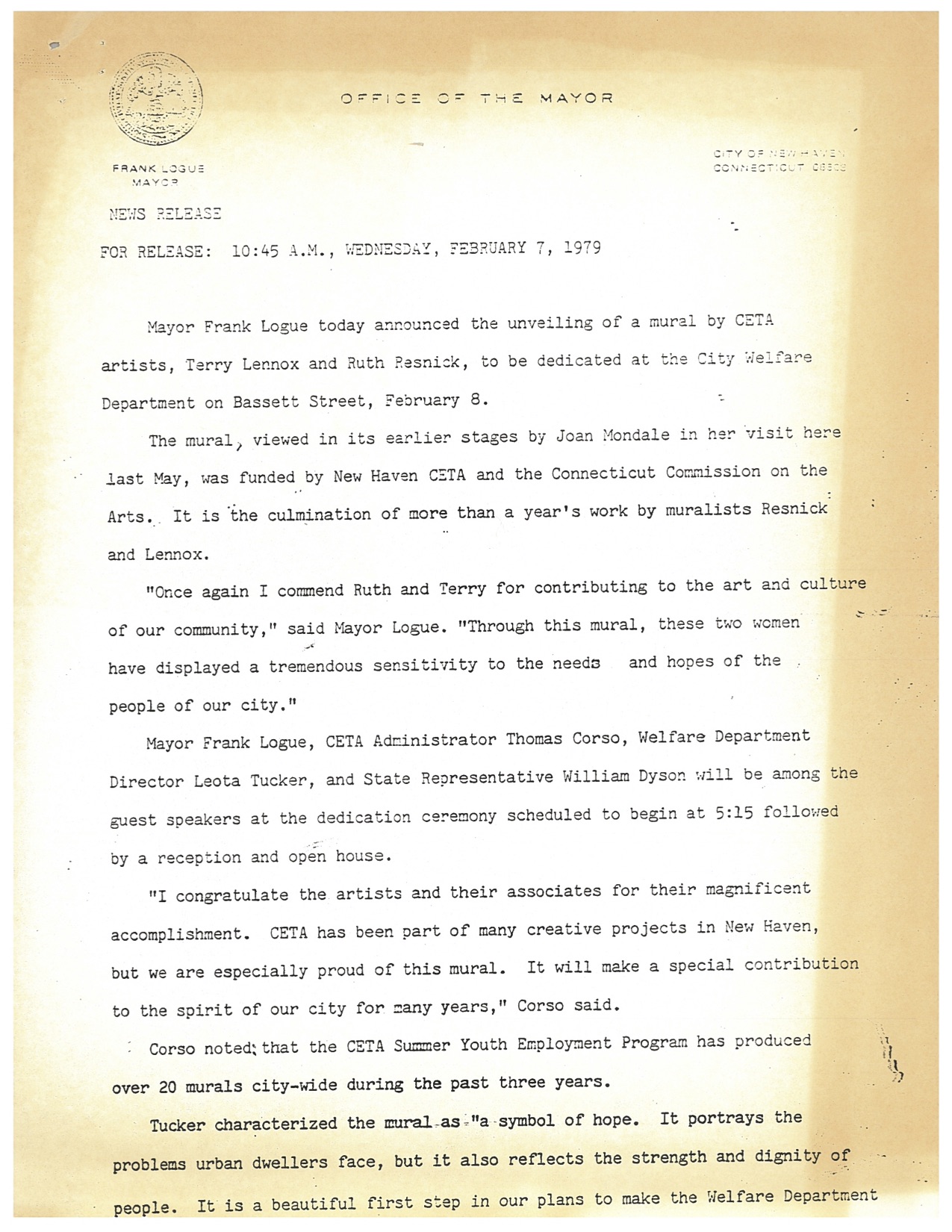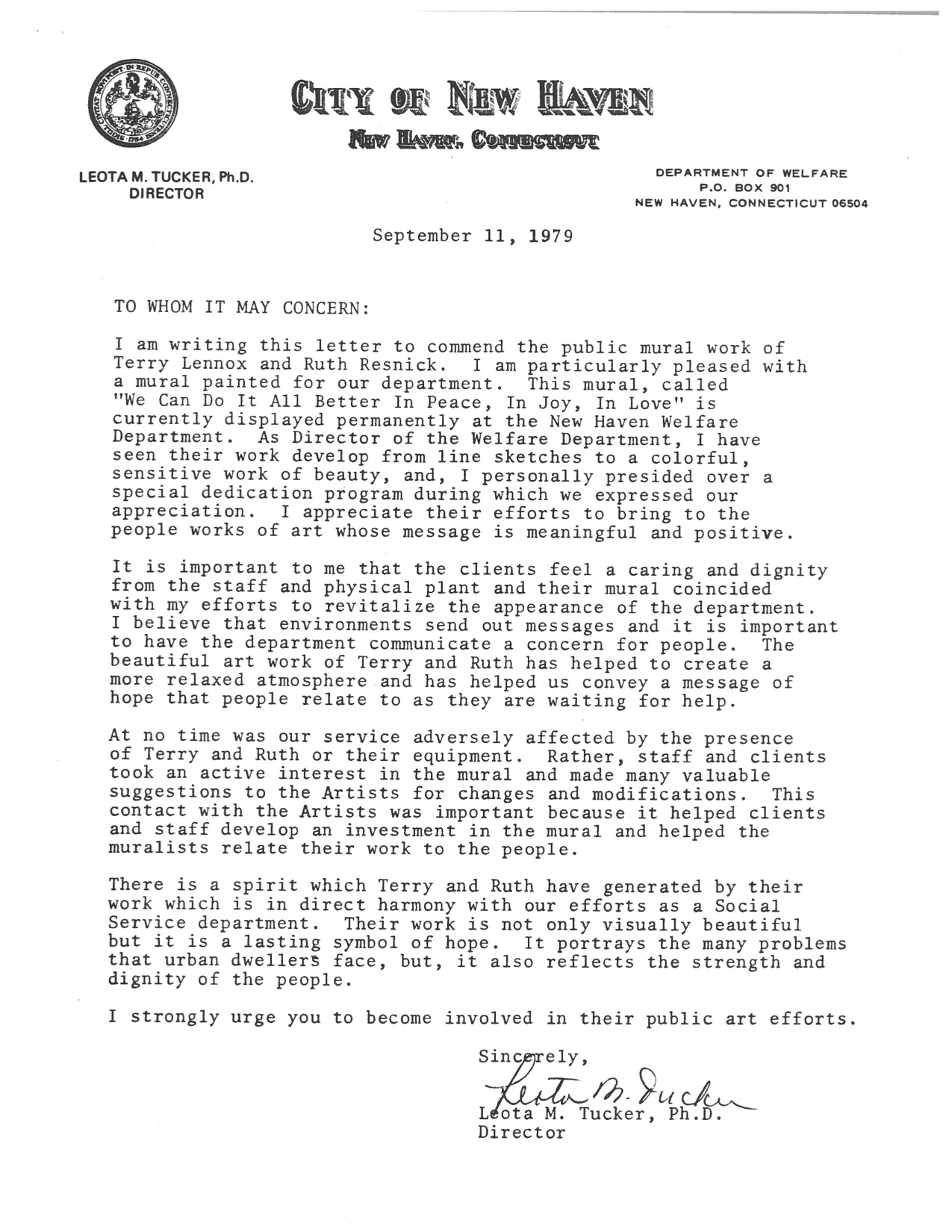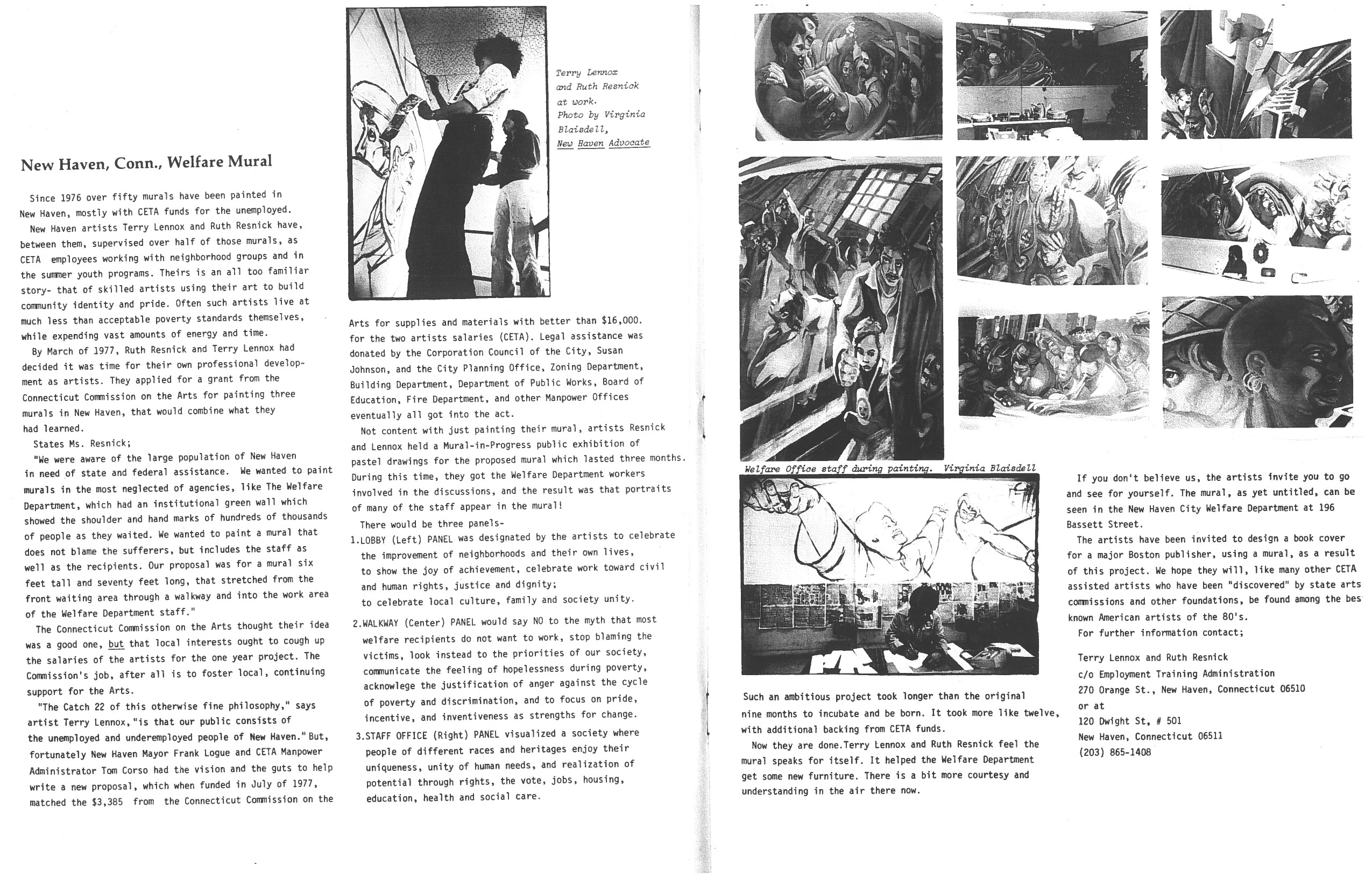CETA projects in New Haven did not merely manifest in murals. The comprehensive program, and the way in which it was implemented, became a catalyst for new job opportunities, community engagement and enrichment programs, and conversations between community groups and the New Haven municipal government that would leave a legacy for public art throughout the city in years to come. New Haven’s CETA Murals attracted national attention – from public figures such as Joan Mondale, the wife of then Vice President Walter Mondale, and Edward Koch, the Mayor of New York City. The legacy of CETA in and outside of New Haven can be explored through the digitized archives below.
Street Scene
A Deep Dive into the Archives
CETA Cultivating Community
New Haven has a long tradition of arts coverage in city newspapers. The CETA program coincided with a blossoming of local arts coverage in dailies and weeklies such as the New Haven Register and the New Haven Advocate. Before the era of websites, social media, and podcasts, print media was the primary way through which New Haveners learned of the artistic activities of the Elm City. Further, it was also the way New Haven connected with the mural movement across the country and beyond, as seen in the newsletters of the National Murals Network.
CETA New Haven Muralists
These handwritten signs, most on craft paper, were created by Ruth Resnick Johnson. Ruth captured the breadth of the CETA program in the large number of participants, volunteers and even the New Haveners who donated paint supplies and wall space. We would love to hear from anyone who worked with New Haven CETA, including the people listed here.
CETA in New Haven City Hall
In the late 1970s, the CETA program was intended to alleviate economic problems exacerbated by a recession, deindustrialization, structural racism and the disinvestment of American cities in a turn towards the suburbs. Mayor Frank Logue saw the arts as a way to benefit both the worker and the city and instructed his staff to pursue granting opportunities that would grow the program outward. Logue’s efforts were recognized nationally, and he was invited by Mayor Edward Koch of New York City to participate in a conference on “urban issues and the arts” (and to visit the first blockbuster art exhibit, on King Tutankhamun at the Metropolitan Museum of Art).
Explore CETA Documents from the Manuscripts & Archives, Yale University Library
CETA Challenges
While the national CETA administration had its own challenges due to uneven funding, management, and Federal oversight, locally, the artists working with CETA were kept on the payrolls for short periods of time, and therefore needed—as artists and creatives have since time immemorial—to continue to find ways to advance their own artistic work and potential careers. Terry Lennox and Ruth Resnick, two CETA mural team leaders who became friends, sought this out together by applying for and receiving Connecticut Commission on the Arts grant funds to create a mural for the Welfare Office, located at 196 Bassett Street in New Haven. The mural was painted on Masonite panels, and featured staff and community members. Placed in the lobby and in staff work areas, the mural became an issue when a partition wall was built and attached to the mural. Eventually the Masonite panels were removed. Their location remains unknown.
CETA around the U.S.
CETA programs existed all over the country. To explore these further, click the links on the map to delve into the research provided by Franklin & Marshall College in each one of the states listed. Each map pin and button below link to materials gathered for each State , territory, and organization that participated in the program.
If you have additional information to contribute, please contact the Public Art Archive team.

